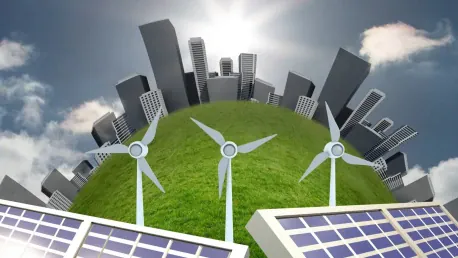Christopher Hailstone, with his in-depth expertise in energy management, renewable energy, and grid reliability, joins us to shed light on Turkey’s evolving energy landscape. From transitioning to a net electricity exporter to becoming Europe’s largest coal power producer, Turkey’s energy journey is both rapid and complex. This insightful interview delves into the multifaceted aspects of Turkey’s energy sector, uncovering the dynamics of renewable growth, coal power production, and the ambitious goals for the future.
Can you provide an overview of Turkey’s transition from a net electricity importer to a net exporter in 2024?
Turkey’s transition to a net electricity exporter in 2024 is indeed a significant milestone. This shift was primarily driven by an impressive increase in domestic electricity generation, totaling 23 TWh last year. The country’s emphasis on enhancing local production capabilities has reduced its dependence on imports. This leap not only bolsters Turkey’s energy security but also positions the nation as a key player in the regional power market.
Despite Turkey’s solar power boom, why are renewables still not growing fast enough to meet rising domestic power demand?
Turkey’s power demand growth is one of the highest in the world, which presents a unique challenge. Factors like record-high temperatures increasing cooling needs significantly contribute to this spike. While there has been a notable rise in domestic electricity generation and solar power installations, the demand’s rapid pace outstrips these new additions. This disparity underscores the need for even more aggressive expansion of renewable capacity to meet the surging energy requirements.
Turkey has become Europe’s biggest coal power producer. Can you elaborate on this development?
Indeed, Turkey’s reliance on coal as a major energy source has increased. The country’s commitment to bolstering coal power production includes plans to expand existing facilities, like the large Afşin Elbistan A plant. There are no new coal-fired power plants under construction, but several expansion projects are in the pipeline. This strategic move aims to ensure energy security despite the broader European trend of reducing coal dependency.
According to Ember’s Türkiye Electricity Review 2025, wind and solar generated 18% of Turkey’s electricity last year. How does this compare to domestic coal production?
Last year, wind and solar together generated 62 TWh, which was higher than the 47 TWh generated from domestic coal. Solar power alone saw a significant growth rate of 39%. This marked increase in renewable energy contributions reflects Turkey’s ongoing efforts to balance its energy mix. However, despite these gains, the growth in renewables still lags behind the rising power demand, emphasizing the need for continued investment in sustainable energy sources.
How does Turkey’s solar power production share compare to other countries in Europe?
Turkey’s solar power production share is certainly growing, but it still trails behind some other European nations. For instance, Hungary leads with a solar share of 24.9%, followed by Greece and Spain. Turkey ranks among the top 20 countries with the highest electricity demand but just surpassed countries like Switzerland while falling behind Romania in solar power production share. This comparison highlights that while Turkey is making strides, there is still room for improvement in its solar production capabilities.
What role do hybrid power plants play in Turkey’s energy security?
Hybrid power plants, which combine solar and hydroelectric sources, are crucial for ensuring Turkey’s energy security. These plants can significantly mitigate the impact of droughts on hydroelectric power generation. By integrating terrestrial and floating solar power plants with existing dams, Turkey can stabilize its energy outputs even during dry years, providing a more resilient energy infrastructure.
Turkey’s hydroelectric power generation with dams increased significantly in 2024. What were the driving factors behind this increase?
Several factors contributed to the boost in hydroelectric power generation in 2024, including a notable increase in the amount of incoming water compared to previous years. Overall, hydroelectric generation rose by 17% from the previous year, totaling 75 TWh. This increase underscores the importance of optimizing the use of natural water resources and integrating renewable energy solutions to enhance power generation capacities.
With coal-fired power generation declining in Europe, how did Turkey overtake Germany as the largest coal power producer?
While coal power output decreased significantly in countries like Germany and Poland, Turkey saw a 3.4% increase to 122 TWh. This rise, coupled with declines elsewhere, led Turkey to overtake Germany. Fossil fuels still make up a substantial part of Turkey’s energy mix, although their share has been decreasing. The country’s energy production strategy reflects a complex balance between maintaining robust power supplies and transitioning to more sustainable sources.
How do Turkey’s renewables ambitions for 2035 align with current growth trends?
Turkey’s renewable energy ambitions are set against an ambitious growth trajectory. By 2035, the government aims to achieve a combined 49% share of wind and solar power in its energy mix. This goal aligns with the current trend of increasing renewable capacities, although meeting these targets will require sustained investment and policy support. The remaining energy mix will likely see a reduced reliance on fossil fuels, targeted at around 20%.
Can you explain the regional context of coal power production in Europe, including the Western Balkans?
When we look at coal power production in Europe, countries like Poland and Czechia have sizeable shares. However, in the Western Balkans, the reliance on coal remains extremely high. Kosovo, for instance, has one of the highest shares globally, while Serbia and Bosnia and Herzegovina also have significant coal power contributions. Turkey’s 35.6% share is notable but varies significantly when compared to its regional counterparts, reflecting diverse energy strategies and dependencies.
Do you have any advice for our readers?
Yes, I would advise staying informed and engaged with developments in renewable energy and sustainability practices. Understand the dynamics of your local energy market, and consider how individual and collective actions can contribute to a more resilient and sustainable energy future. Supporting renewable energy initiatives and being conscious of your energy consumption are small but impactful ways to contribute to broader energy transition goals.









